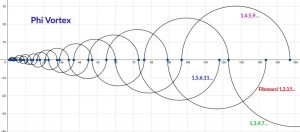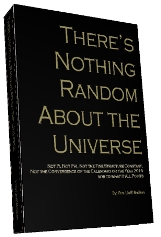Each of the 8 days of Chanukah we read a laundry list of sacrifice to be made by the 12 tribes in the Miskan or Holy Temple, events far removed from our lives by thousands of years.
1 Silver plate weighing 130 shekels (ShKL)
1 Silver bowl weighing 70 shekels
1 Gold bowl weighting 10 shekels
1 Young bull
1 Ram
1male lamb (1 year old)
1 male goat
2 oxen
5 rams
5 male goats
5 male lambs (1 year old)
So why do we recite these sacrifices when we can’t physically make them without the Holy Temple, and haven’t been able to do so for nearly 2000 years? Before we get to why, lets see what the sacrifices are all about first.
The 130 shekels of silver for the plate each day corresponds Jacob’s age when he entered Egypt to begin the exile in Egypt. It’s also the value of Sinai, where the Israelites received the Torah 210 years later. The 70 shekels of silver correspond to the 70 family members with Jacob who entered Egypt. It also represents the 70 nations of the current exile and the year 70 CE when the Second Holy Temple was destroyed and the current exile began. And while the 10 shekels of gold correspond to the 10 utterances received at Sinai, the full weight of 130+70=10 = 210 shekels thus corresponds to the 210 years of the Egyptian exile, and the value of the word Shekel (ShKL), or 430, corresponds to the 430 years of the full first exile from the Covenant of Abraham in 2018 HC to the reception of the Torah at Sinai in 2448 HC.
Now, a deeper secret within this weight is that 210 shekels are equivalent to a numerical value of 210 x 430 = 90,300 or 903 x 100, an 903 is the recognized sum of all the positive integers through 42 and since there is a spiritual tenet that nothing is ever lost, 903 is the full inclusive value of 42, encompassing all the energy of the integers that came before it.
Each Chanukah we read about the sacrifices from Numbers (B’midbar) 7:1-89 and 8:1-4, and while the 89 verses of chapter 7 obviously correspond to the gematria value of Chanukah (89), the 4 verses of chapter 8 correspond to the 4 periods of exile.
The word Shekel is repeated 26 times during in the 93 verses of the full reading and not only is 26 the value of the Tetragrammaton (YHVH), but the value of the word shekel (ShKL) spelled out (gematria milui) is 620, that of keter, the highest, crowning sefira (dimension) and in the multiply repeated phrase Shekel B’Shekel H’Kodesh, the word H’Kodesh (HKDSh) likewise has the gematria milui (spelled-out-value), including the kolel, of 1000, which is also representative of keter, and of elef (ELP), one thousand, and thus to the letter alef (ELP), alluding to the beginning. Therefore, the phrase Shekel B’Shekel H’Kodesh can read as “the crown in the crown at the beginning,” or even “keter of keter of keter,” which is the highest level imaginable.
Now there’s obviously a lot of potent energy available in these connections to the YHVH and to keter of keter of keter, but how does it relate to us?
Well, to begin with, the word H’kodesh in gematria milui sofit also has the numerical value of 2008, as in the year just past 2008 CE, when from a financial standpoint the world began its implosion, when the world’s stock markets declined a collective 42%.
Moreover, the total average value of the 41 combined occurrences of the 3 words in the phrase Shekel B’Shekel H’Kodesh found in the reading of the sacrifices is ((15 x 409)+(12×430)+(14×432))/3 – 3 (kolel) = 5778, as in the year 5778 HC (2018 CE), less than 10 years from now, when chazal has prophesied the coming of H’Mashiach.
There are 6 different phrases throughout the sacrifices that have a numerical value of 5777, (representing the year 2017 CE) and of the 5845 verses in the Torah, there are only 13 incidences where the value of a phrase wholly within a verse has the value of 5777 and one of those is verse Numbers 7:87 of the sacrifices, the summary verse for all the sacrifices: “…12 young bulls, 12 rams and 12 male lambs a year old, together with their grain offering. 12 male goats….” This is significant because the geula was prophesied to most probably occur in the period 5777.78 to 5778.28 .
As for the year 5778, amongst the 93 verses of the sacrifices there are 16 occurrences of phrases (defined as a contiguous grouping or words) with the total value of 5778, the last of which is in the final verse of the sacrifices, Numbers 8:4, where we find the 22-word phrase “…the Menorah, just as The Lord Commanded Moses. This is how the menorah was made: It was made from hammered gold…had shown.”
And not coincidentally, the number 84 represents Pad, redemption, the union of the upper and lower Mem-Bet (42-Letter Names) necessary for the geula.
But possibly even more telling, of the 5845 verses in the Torah, 3.14%, or 184 phrases wholly within verses, equal 2019, the first year of the new era of Mashiach as prophesied by chazal, and of these 184 phrases, 35 are within the 93 verses of the sacrifices, an unfathomably large percentage. Moreover, as you may have already recognized, 184 is the numerical value of Pkad, which chazal has independently connected to the coming of Mashiach and which we wrote about in a previous blog.
So of the 93 verses of the sacrifices, fully, 57 (6, 16, and 35) are either connected to the year 2017 (5777), 2018 (5778), or 2019 and another 41 times specifically to 5778 through the repeated occurrences of shekel b’shekel h’kodesh.
Can this be a coincidence? No, there’s no statistical way. It had to have been planned that way long before the Maccabees, from the moment of the creation of the Torah. And thus it’s no coincidence either that 57/93 = .612903, or 612 (brit/covenant) and 903, and allusion to the mem-bet (42-Letter Name) as described above.
So the message is clear what the sacrifices have programmed into them: a subliminal connection for us to the geula and the coming of Moshiach. And so it’s also now clear, why we should recite them every year even though there’s no Temple or channel to make the sacrifices.
But they are also a reminder that in order to be part of the geula (final redemption), we need to make sacrifices, and through his translation and interpretation of the Zohar in Vayegash 63, Rav Ashlag (HaSulam) tells us how: From man, four types of men branched out-some righteous and some wicked, some stupid and some wise. Of these, some were rich and some poor. They can bring merit and benefit to each other. The righteous can benefit the wicked by causing them to repent their sins; the wise can benefit the foolish by teaching them sense; the rich can benefit the poor by supporting them in their need. Through these actions man merits life everlasting and attaches himself to the tree-of-life.”
According to Rabbi Shimon Bar Yochai, author of the Zohar, this is the secret meaning of Bereshit 2:10 “A river flowed out of Eden to water the garden. From there it divided and became four major rivers,” which is another reason why the weight of the sacrifices was 210 shekels.
In order to connect with the tree-of-life reality, the Mashiach reality, being offered to us for the 3rd, and possibly final time, in the 5778 period, we need to be our brothers’ keepers. We were all born with a purpose. If we’re rich, we must help our poorer brethren; this is why they were born without mazal and we were. If we were born wise, it’s our duty with the less fortunate to share our wisdom and knowledge. They are there for us as much as we are there for them. And if we’re righteous we must stand up to the wicked, reach out to them with unconditional love; we must find the holy sparks and allow them to be elevated.
If you believe in G-d, then you must know that he could have made everyone rich, wise and righteous, but what purpose would we then have. What would we contribute to the universe; why would we need a conscience or a consciousness. And if we don’t have a purpose then what are we doing with ourselves? Are we using our consciousness? We must do our part to help our brethren reach the tree-of-life reality, and in so doing, help ourselves reach it as well.
As for the sacrifice we read about, at the end of the 4th exile, we must also make them too, though to us they are now more personal. Each of the 4 types of animals had a specific purpose to help the 4 types of man. But the gold and silver had other significance too, to open up the gates of wisdom for us.
The complete value (standard plus ordinal) of silver, representing gevura/judgment is 203, as in the first 3 letters of the Torah and the complete value of gold, repesting chesed/loving-kindness is 28, as in the 28 letters of the Torah’s first verse and all 12 tribes were instructed to give both gold and silver in the weights/proportions described above for the sacrifices. Together the complete values of gold and silver (28 + 203) = 231, as in the 231 Gates of Wisdom, described by Abraham in the Sefer Yetzirah, and in the sum of the positive integers through 22, as in the 22 letters of the alef-bet. Gold and silver, money, assets, mean nothing in the achievement of the tree-of-life reality–it can’t be purchased, but chesed/loving-kindness, and helping one another, these are the commodities that count. If you were blessed with money, use it to help others while you still can. 42% of the assets ($29 trillion or so) in the worlds stock markets were lost year. It could have been 72%, and it still could be. Do your part while it’s only 42%, support the wise ones and the righteous ones to do there part–the part you cannot do for yourself, and help the poor ones so they may help you. If you’re wise, reach out and teach. If you’re, righteous, shine forth and elevate. We must all help each other–none of us can make the sacrifices on there own. All the 12 tribes gave equally. The sacrifices are made for the community.
The hope for the community lies in our individual sacrifice of the rich helping the wise and righteous, and the wise and the righteous helping the rich and wicked to see, and together everyone helping the poor. Only as a community can we overcome our destinies.
B”H Through these actions may we merit life everlasting and attach ourselves to the tree-of-life.




